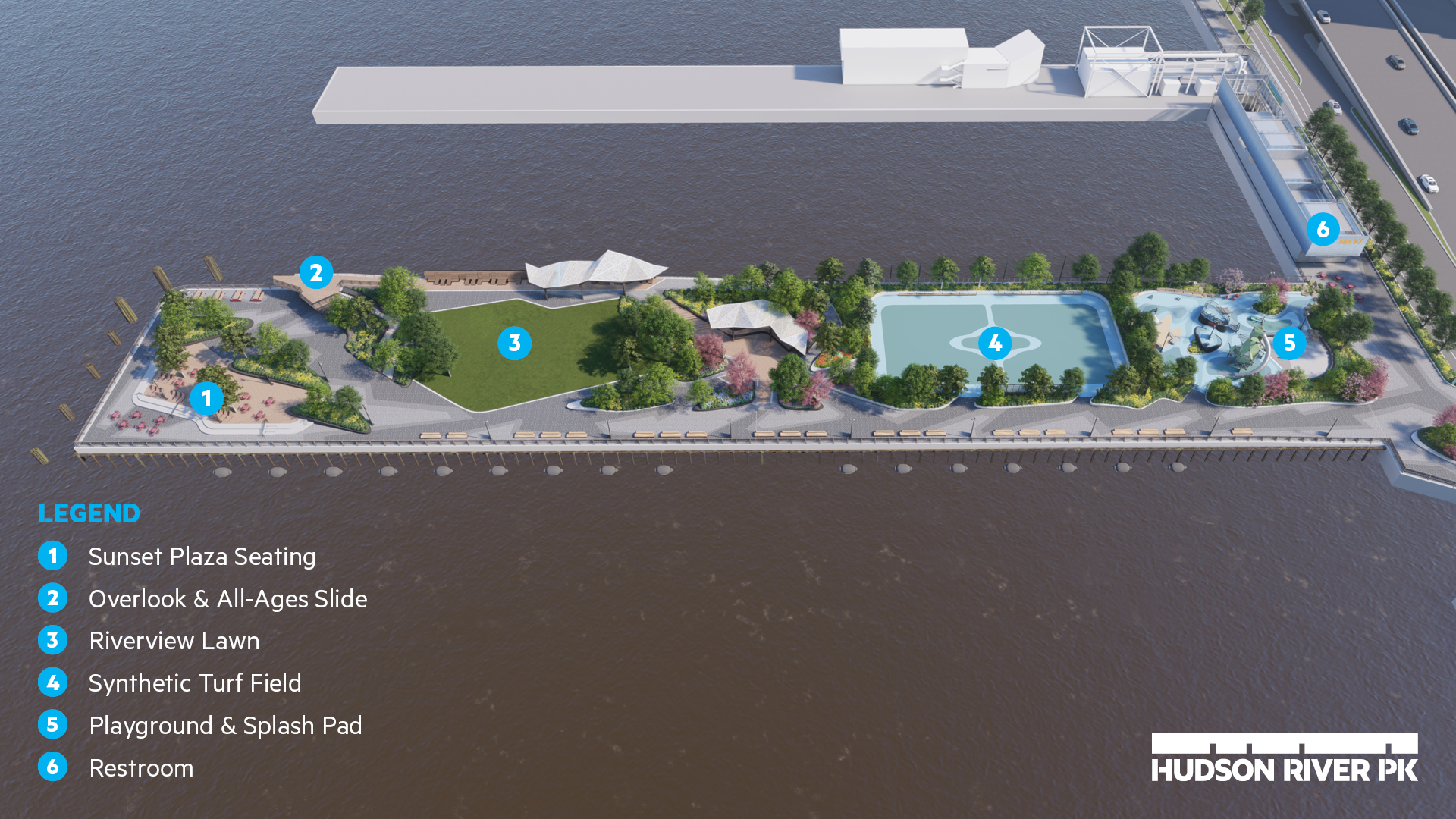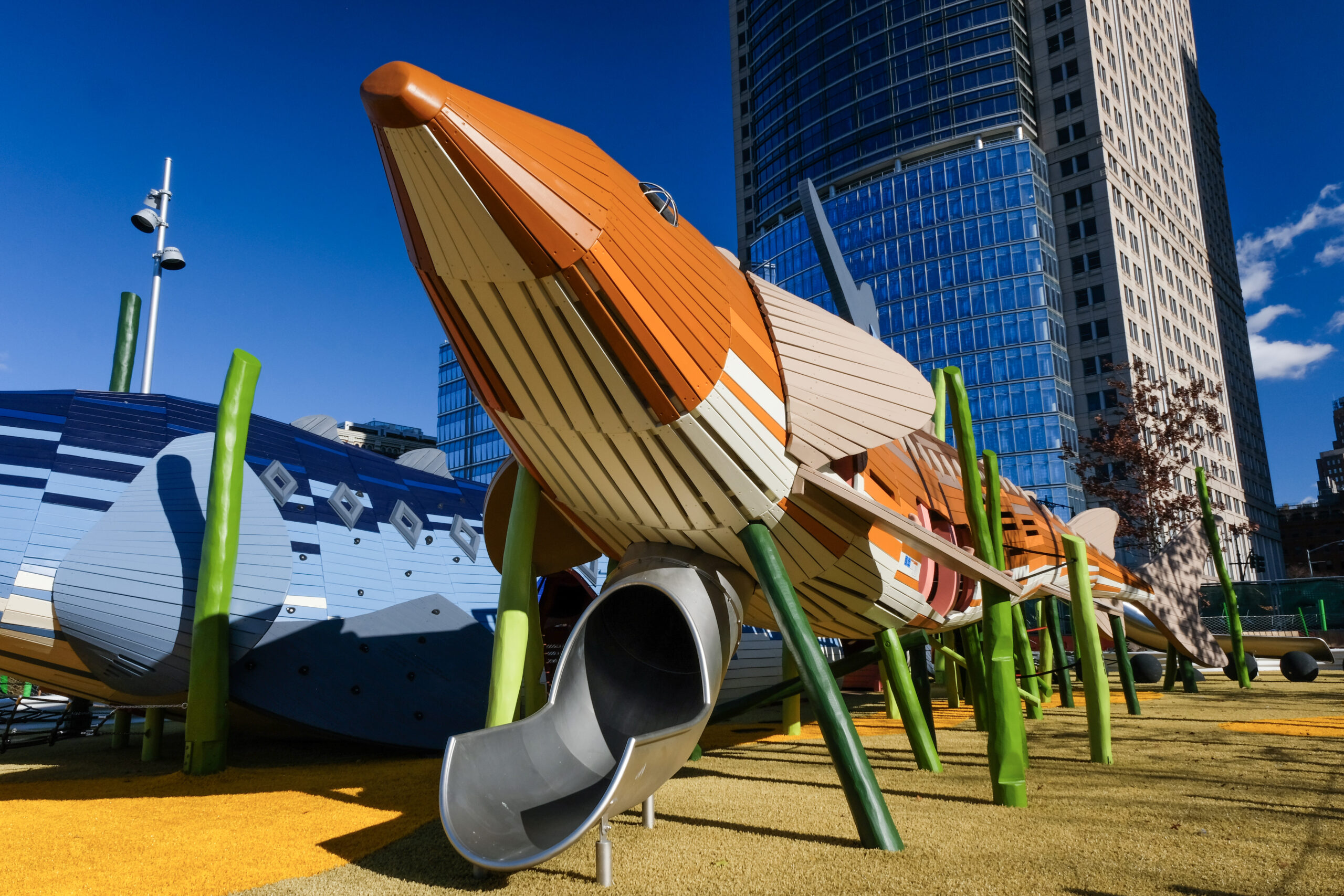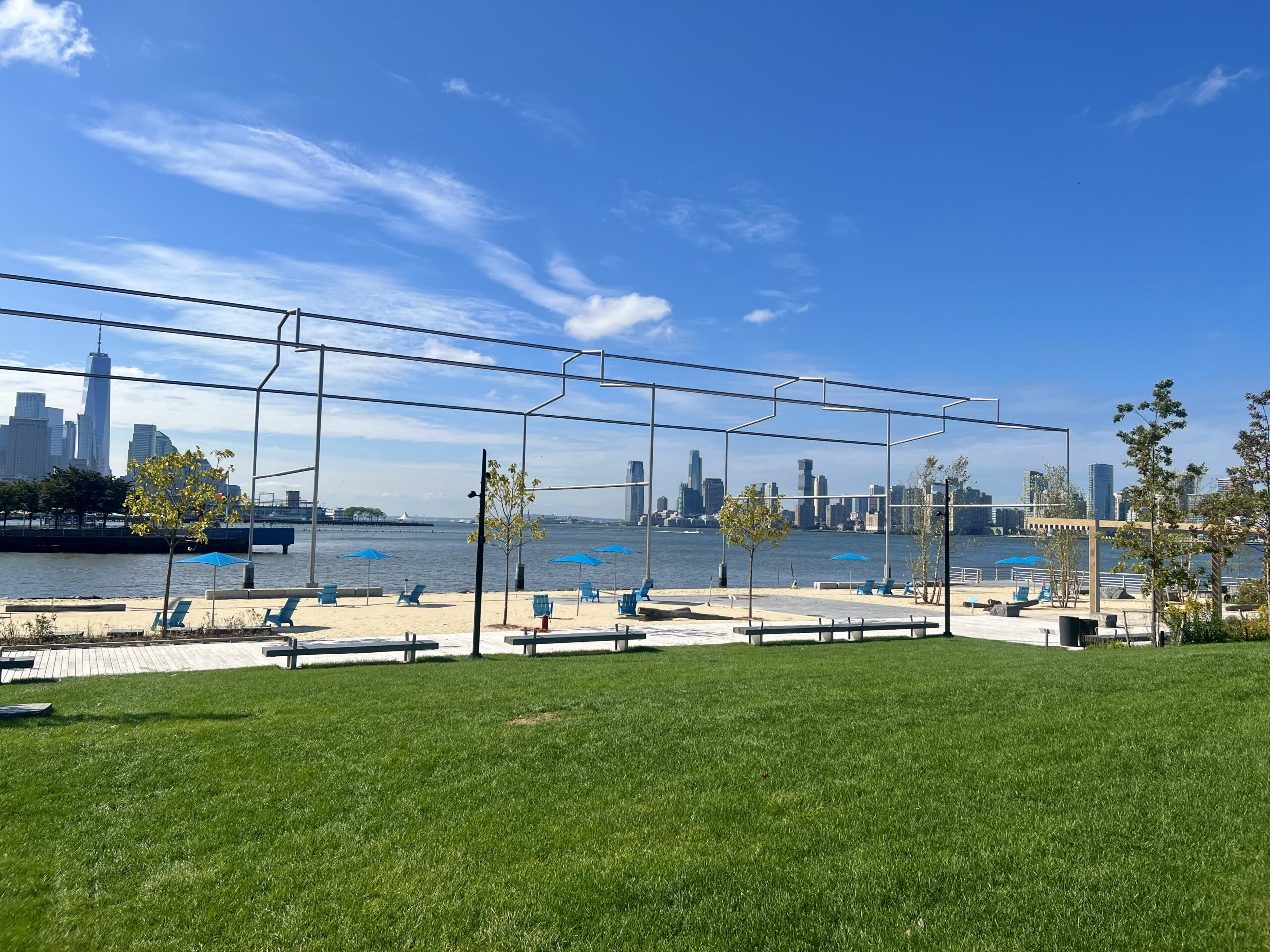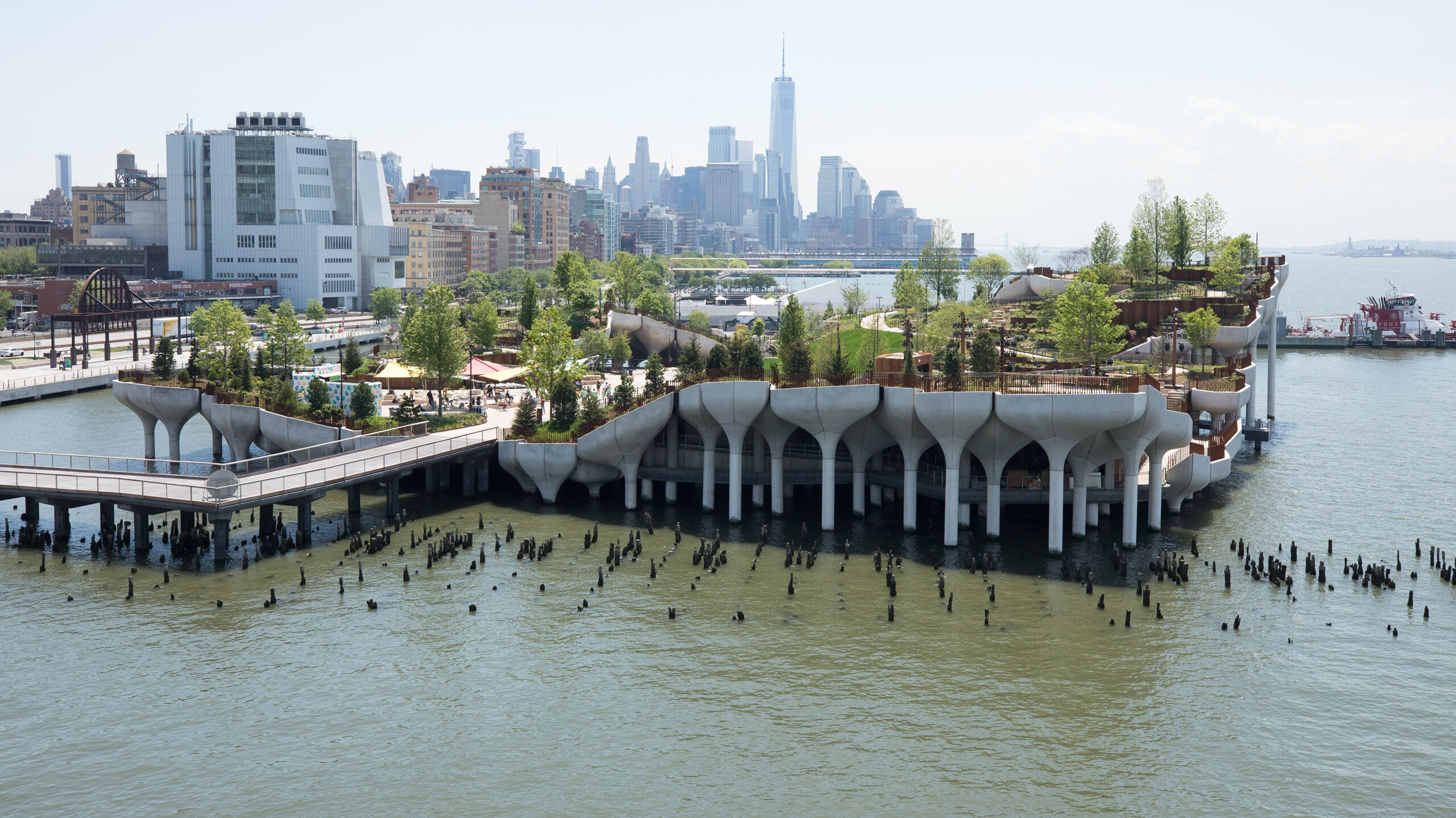Hudson River Park is where you go in NYC for recreation, relaxing, events, culture, dining, panoramic views and more. On more than a dozen public piers, not to mention miles of pathways and landscapes, you’ll discover a park that offers more than you may imagine—a place that surprises and delights visitors with a diverse and eclectic range of activities and experiences that stimulate the senses and allow spirits to soar.
Hudson River Park is also a work in progress. Excitingly, there is more public park space on its way to you. Beyond design and construction, we have also been adapting to the current COVID-19 world by reimagining beloved public and educational programs so that both new and longstanding audiences can participate in them safely and remotely. We are also still conducting scientific research, including environmental DNA sampling in the 400-acre River Sanctuary that surrounds the Park’s many piers.
Find out what we have to inspire you…
Under Construction
Pier 97
As part of the design process, !melk and the Trust met with the community in November and December 2018 to listen to individuals’ ideas about the design program—i.e., what kinds of uses and spaces are desired. !melk used this information to start developing the concept design for the area and met with the community again in November 2019 to present the very well-received design concept. To read more, please visit our Pier 97 Design Process page.
Now Open!
Pier 26 Science Playground
Opened in January 2024, our Pier 26 Science Playground features larger-than-life, highly interactive play features in the forms of native and endangered sturgeon species. Designed by the award-winning OLIN, this 4,000 square foot marine-science focused playground is a place for children to learn, play and be inspired by wildlife and the Hudson River Habitat.
Gansevoort Peninsula
Opened in October 2023, Gansevoort Peninsula is the largest stand-alone recreational space in Hudson River Park. Providing 5.5 acres with a sandy shoreline beach, ballfield, pine grove, boardwalks, adult fitness equipment, and a salt marsh—plus, the last remaining block of 13th Avenue!
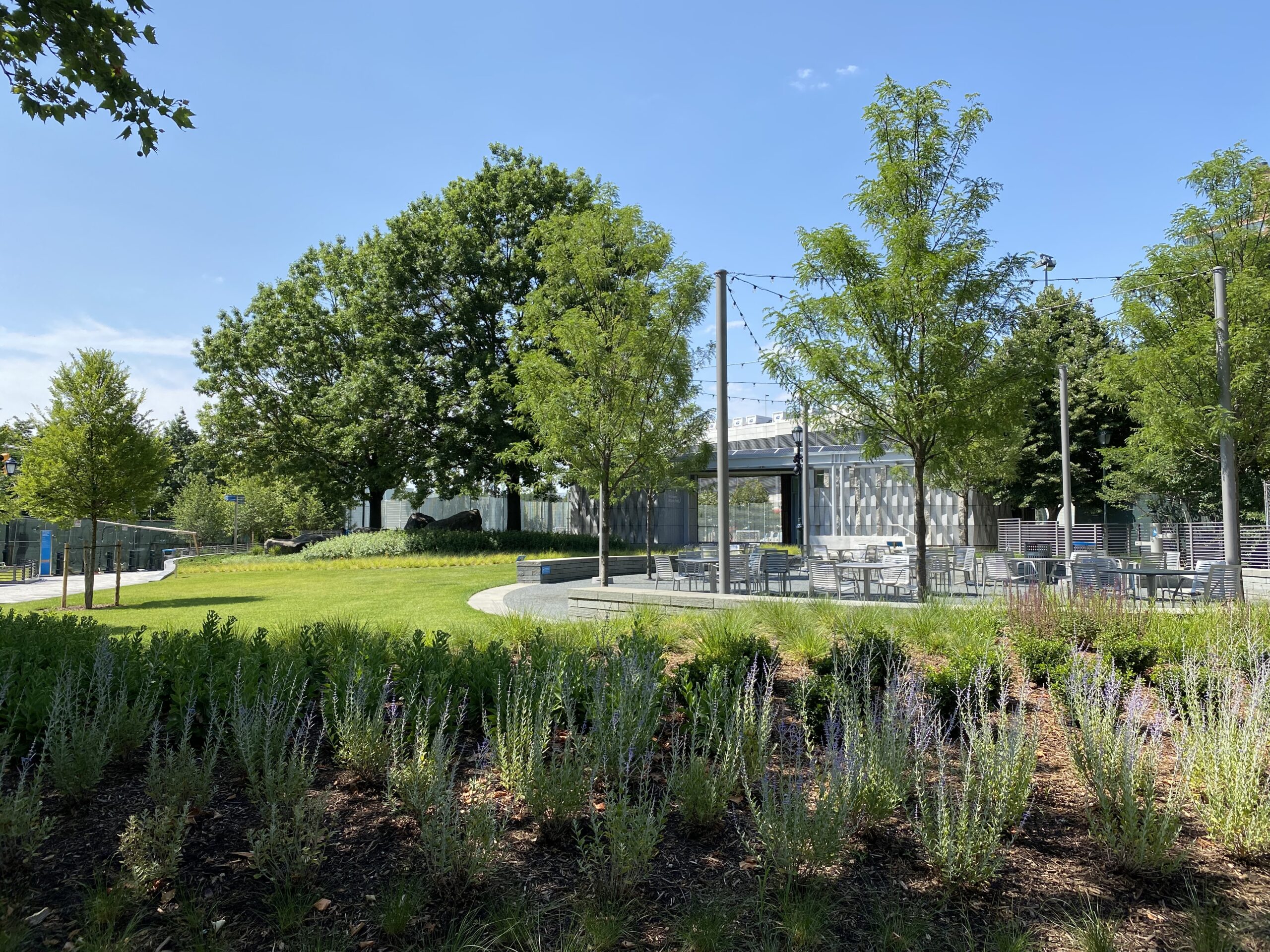
Chelsea Waterside Park
The refreshed Chelsea Waterside creates more usable spaces for visitors while also prioritizing expanding green spaces and plantings through the reduction of paved areas. In addition to its inspiring playground and its basketball court, Chelsea Waterside now includes a new public restroom, a permanent picnic area with lighting for evening use, an expanded and refreshed synthetic turf sports field, and an expanded dog park with water features and separate areas for small and large dogs.

Pier 57
Historic Pier 57 has opened in phases. The public rooftop, with incredible views of Little Island and New York Harbor, opened in 2022 and this Spring, the Park’s River Project began inviting students to experience a high-tech classroom and gallery of interactive science exhibits. The James Beard-backed food hall also welcomed its first Park visitors in Spring 2023.
Little Island
The dramatic structure rising from the park waters just south of 14 Street is a new Hudson River Park pier known as Little Island. Now open, Little Island is conceived and built in partnership with the Diller-Von Furstenberg Family Foundation and Hudson River Park Trust.
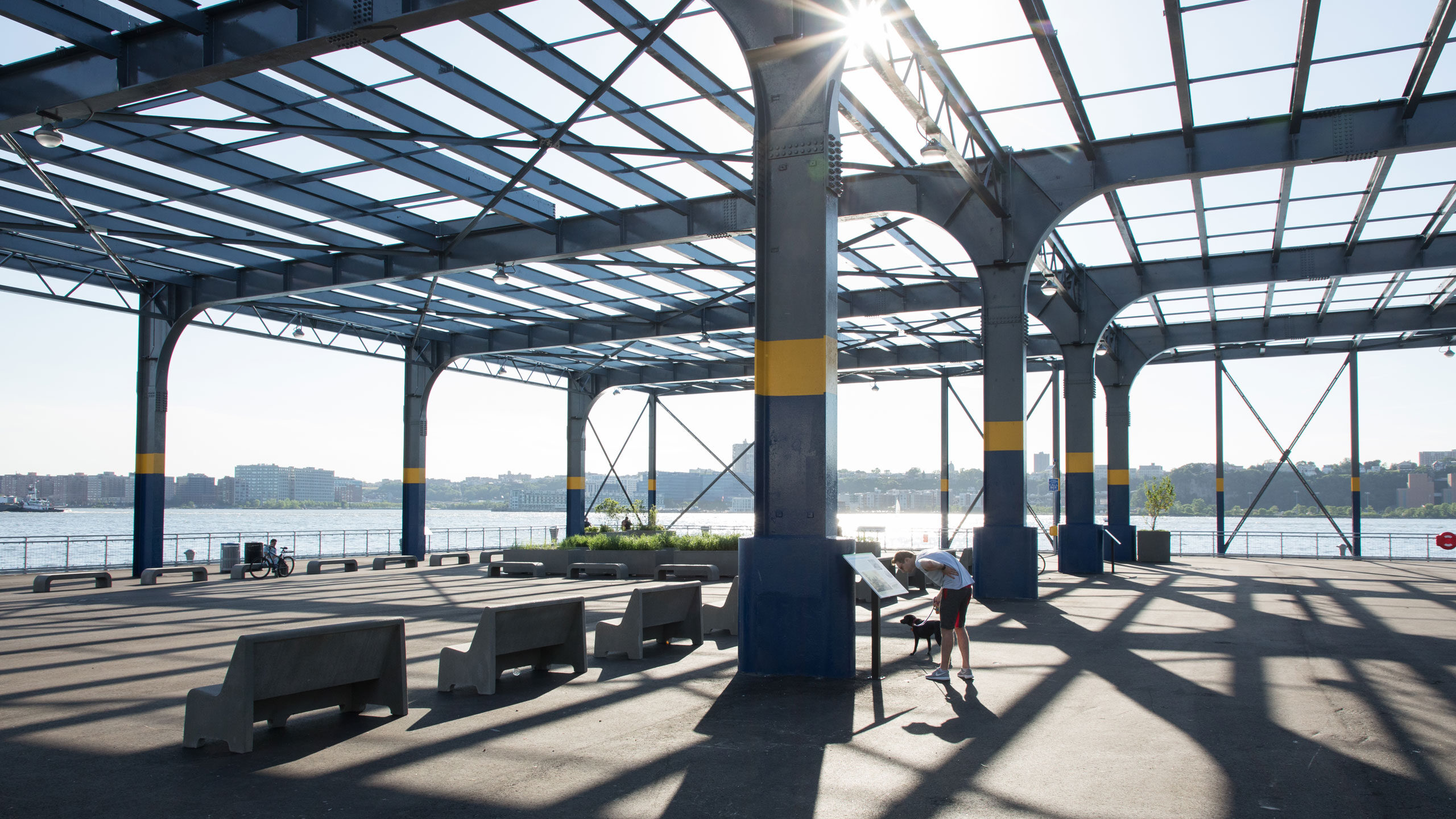
Pier 76
Hudson River Park’s Pier 76 opened to the public in June 2021. Read more about this pier’s storied history.
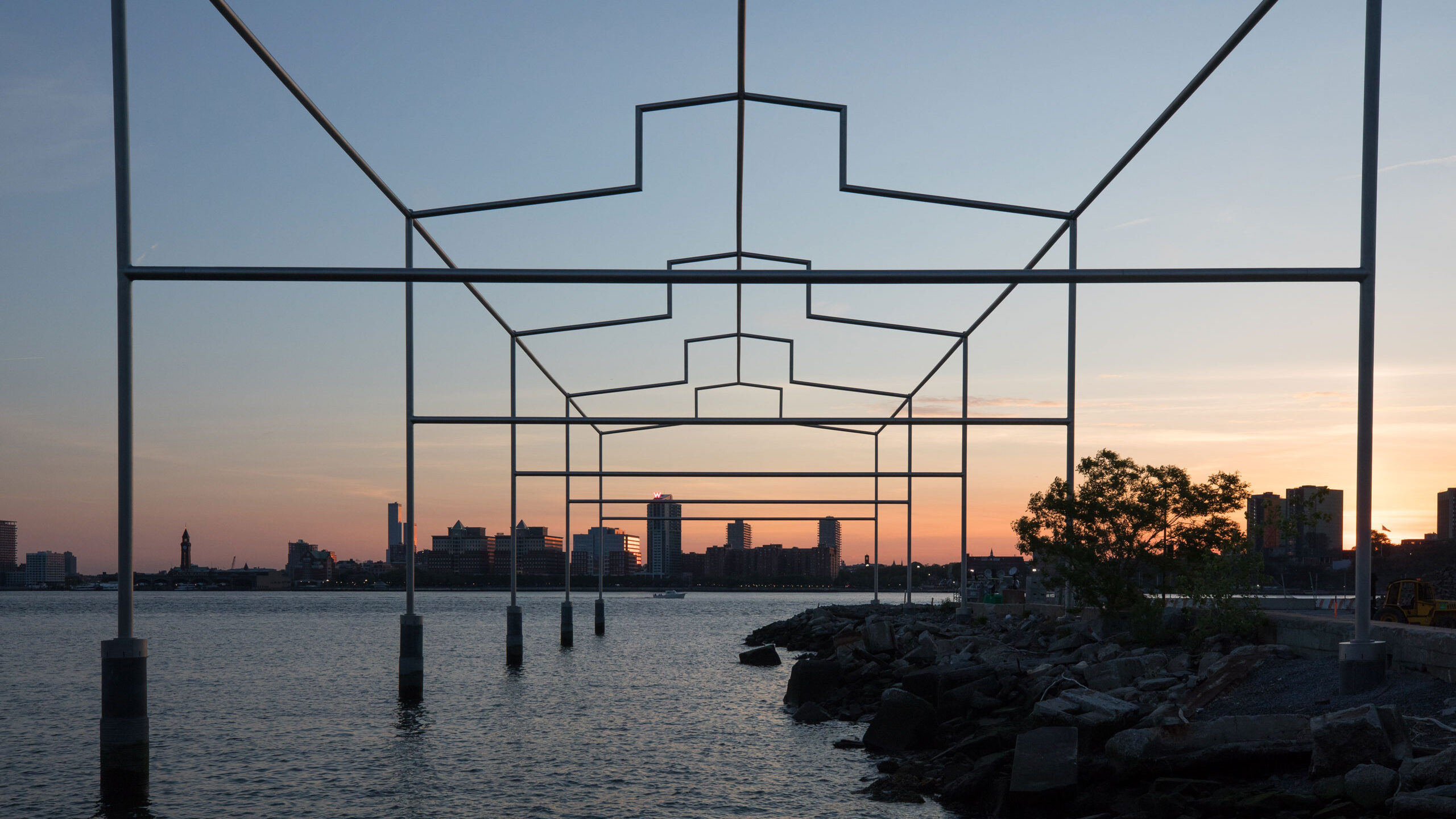
New Public Art: Day’s End by David Hammons
On the south edge of the Gansevoort Peninsula, the Whitney Museum of American Art is constructing a permanent, site-specific public art project by David Hammons (b. 1943) that has been donated to the Park following its completion in Spring 2021.
Day’s End derives its inspiration and name from an artwork by Gordon Matta-Clarke created in 1975. At that time, Matta-Clarke began carving into an abandoned pier shed once located at Pier 52, turning it into a living sculpture that celebrated water and light. David Hammons’ Day’s End will serve as a “ghost monument” to Gordon Matta-Clark’s earlier work, alluding to the changing history of New York’s waterfront with an open, skeletal structure that precisely follows the outline, dimensions and location of the original structure on Pier 52. As one of the largest public art installations in New York City, Day’s End is publicly accessible and offers an extraordinary place to experience the waterfront.
Sustainability
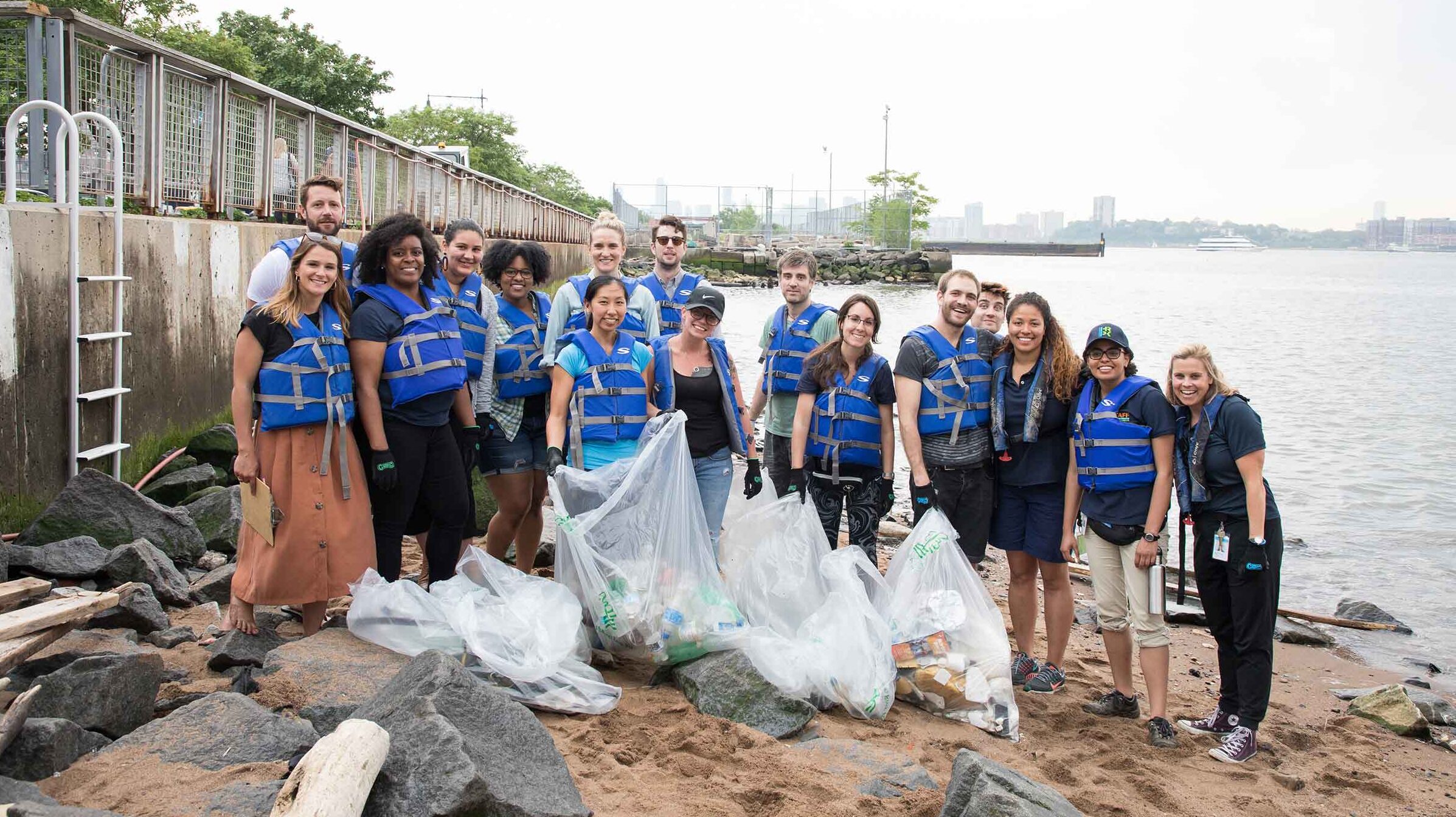
Park Over Plastic Toolkit
To mark the third anniversary of Park Over Plastic, the Park announced a new resource to our community. We developed the Park Over Plastic Toolkit to share actionable tools that help address our plastic pollution problem. It is designed to support parks, businesses, organizations and other groups that are looking to expand efforts to reduce plastic waste. We invite you to use the resources available in this Toolkit to best serve the needs of your community and hope that it inspires others to reduce their plastic footprint and advocate for greener alternatives that are accessible to all.

Community Compost Dashboard
Hudson River Park launched the HRPK Community Compost Tracker to share data from organic food waste collected at our 10 drop-off locations. Park users, students and compost enthusiasts alike can follow and explore the amount of community compost collected by neighborhood, drop off location, month and year through this interactive tool. All data is downloadable to invite further program analysis in and out of the classroom. Check out the success of the HRPK Community Compost program and learn how to contribute your food scraps to the Park.
Research

Tribeca Habitat Enhancement Project
In Summer 2023, Hudson River Park is launched Phase II of the Tribeca Habitat Enhancement Project, installing several million juvenile oysters in the area around the Park’s Pier 32 pile field. These additional structures will help to complete the artificial reef corridor originally proposed by the project. Since the Hudson River’s bottom is primarily soft and muddy, adding more solid structures offers both a settling area for encrusting organisms like oysters and mussels, and a hiding place for mobile creatures such as crabs and young fish. This new generation of oysters will mature in a few years and bolster the initial set of oysters deployed in 2021, increasing the likelihood of sustainable populations in the region.
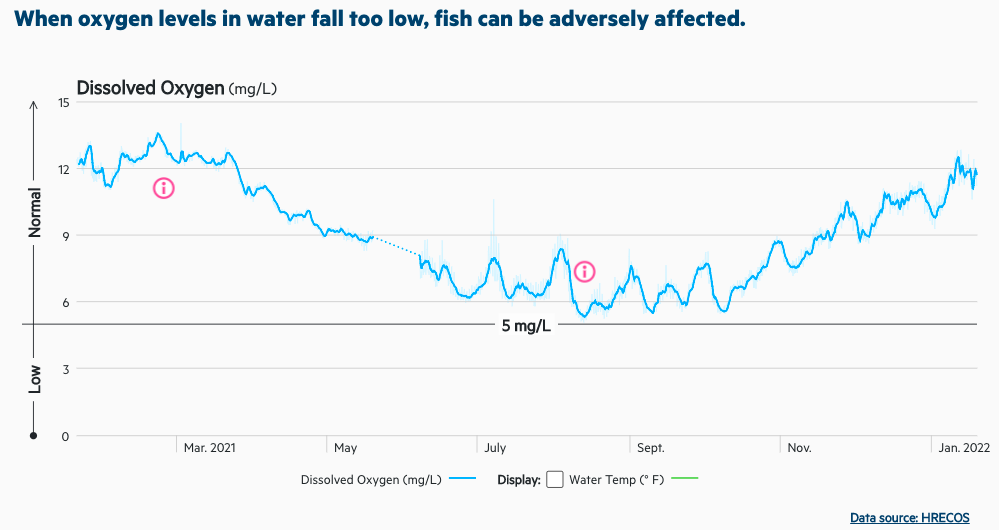
River Conditions Dashboard
Our River Project team collaborated with experts to develop an interactive dashboard that makes the Park’s water quality and weather data accessible to broader audiences. View the dashboard’s charts and stories to learn about the physical and environmental factors affecting our local waters. The dashboard also includes a new model to estimate the presence of bacteria, visualizing the impact that NYC’s combined sewer system has on our local waterways. Thanks to our partners including Cantina, a design firm that led the project pro-bono, and Wade McGillis at Columbia University for helping to make Park data more accessible.
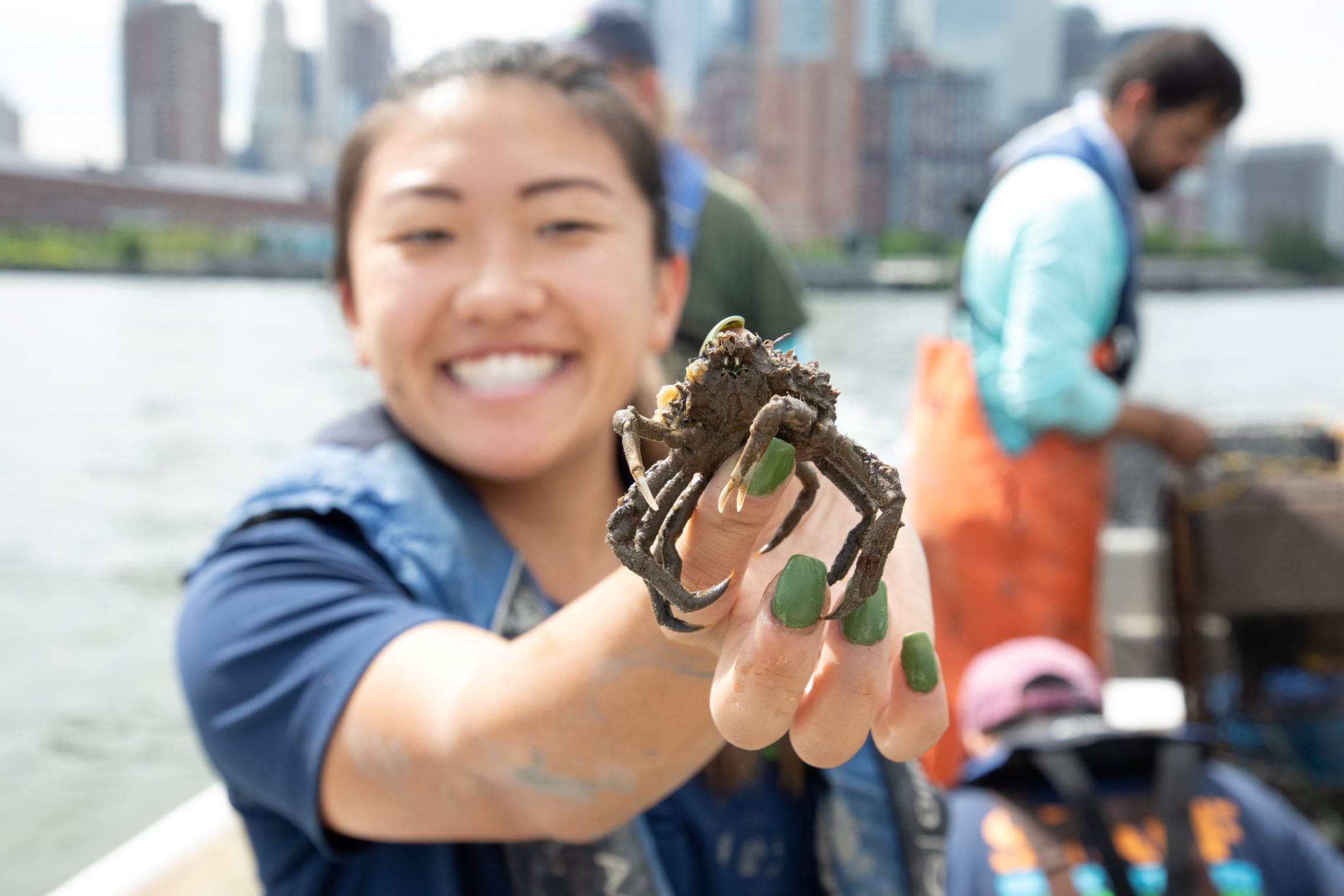
Visiting Scholars Program
The Park is pleased to share the expansion of their Visiting Scholars Program. This year the Park’s River Project is piloting a small awards program in collaboration with the City University of New York (CUNY) that invites CUNY’s accomplished faculty to submit research proposals to help further the Trust’s interest in understanding current and emerging issues for the Lower Hudson River Estuary. This opportunity connects CUNY faculty and students to the Park’s science facilities and staff to conduct research that addresses current knowledge gaps. Congratulations to our first research fund recipients, Dr. Chester Zarnoch of Baruch College, and Dr. Dianne Greenfield of Queens College, who will be studying salt marsh nutrient accrual and aquatic microbial diversity, respectively. With almost ten other visiting scholar projects conducting in-Park research from oyster genomics and pollinator biodiversity to toadfish acoustics and encrusting organisms’ influence on oyster spat, we’ve never had so much science in one season! Learn more on our Visiting Scholars page.
